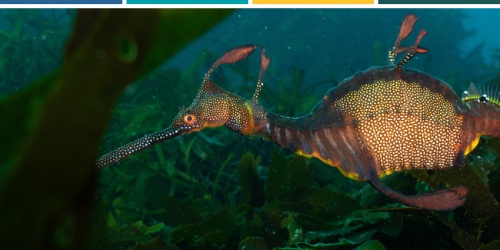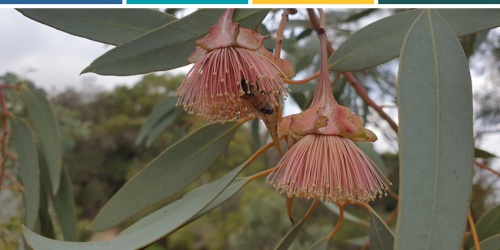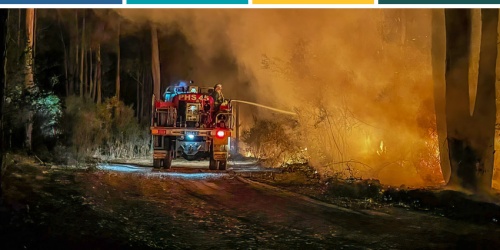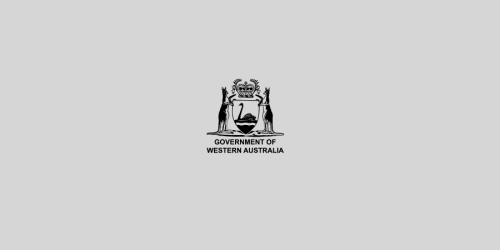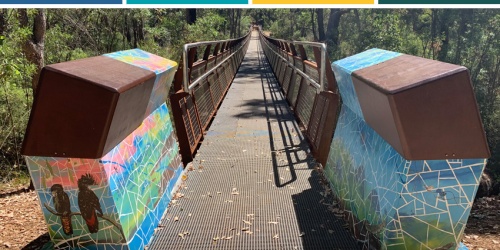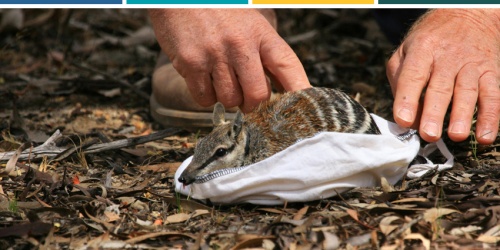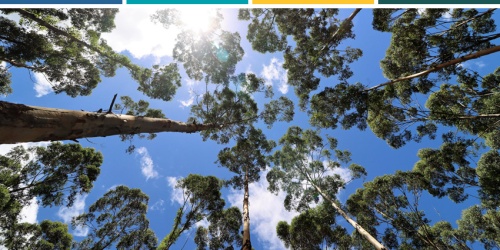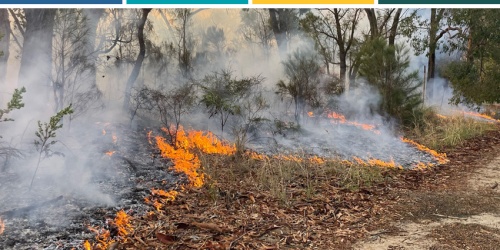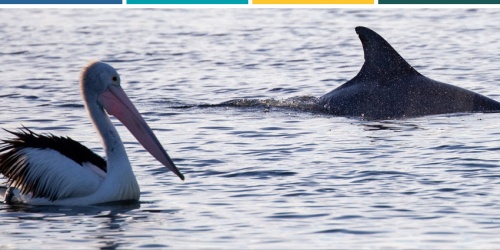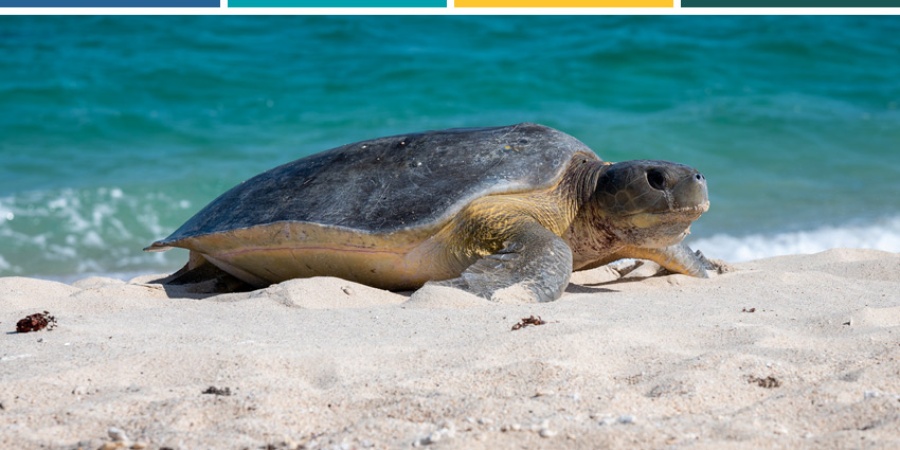
Service 7 works in partnership with research organisations, private companies, non-government organisations, traditional owners and community groups to develop and implement programs to conserve and improve the management of the State’s biodiversity, based on best-practice science.
Performance summary
Table 5: Service 7 performance summary
| 2021–22 target | 2021–22 actual | Variance | |
|---|---|---|---|
| Expense by service | $21,755,000 | $16,994,000 | ($4,761,000) |
| Key efficiency indicator | |||
| Average cost per hectare of wildlife habitat | $0.67 | $0.54 | ($0.13) |
More information on these indicators can be found on the Disclosures and legal compliance page in the downloads section.
Performance highlights
Strategic partnerships
- The department completed several projects in partnership with the National Environmental Science Program (NESP) Northern Australian Environment Resources Hub, Environs Kimberley and Indigenous Rangers, and also in collaboration with the NESP Threatened Species Recovery Hub projects. As a partner in the newly established NESP Resilient Landscapes Hub, the department is helping to shape project development for this 10-year program.
- The Rangelands Restoration project continued at Matuwa (Lorna Glen former pastoral station). Reintroduced populations of bilby, brushtail possum (Trichosurus vulpecula), rufous hare-wallaby, golden bandicoot and boodie continued to be monitored. Martu Traditional Owners and the department continued to jointly manage this property on the Matuwa Kurrara Kurrara (MKK) Indigenous Protected Area for conservation and cultural purposes.
- Ongoing Rangeland Restoration activities, with support from the Tarlka Matuwa Piarku Aboriginal Corporation, the MKK Rangers and Desert Support Services, included introduced predator control, prescribed burning outside the enclosure and genetic assessments of translocated populations. This program is supported by offset funding from the Chevron-operated Gorgon project.
- The North West Shelf Flatback Turtle Conservation Program partnered successfully with local Aboriginal groups such as the Ngarluma Aboriginal Corporation and the Nyamba Buru Yawuru Limited to conserve flatback turtles (Natator depressus).
- Research associated with environmental offset programs from the Pluto and Wheatstone gas developments continued. Fieldwork associated with the final major sub-project of Pluto offset on primary productivity and energy transfer between marine ecosystems, is continuing.
Biological and environmental surveys
- Waterbird monitoring was undertaken at Ramsar sites in the department’s South West and South Coast regions. This included quarterly monitoring at the Muir-Byenup System Ramsar wetlands with funding from South West Catchments Council. The Lake Warden and Lake Gore Ramsar sites were surveyed in 2021 with funding from South Coast NRM and monthly monitoring in the Vasse-Wonnerup Ramsar wetlands continued as part of a cooperative arrangement with DWER in conjunction with the Vasse Taskforce.
- Surveys of woylie and the vulnerable quokka (Setonix brachyurus) in Wellington National Park were completed in partnership with the South West Catchments Council. A partnership with the Australian Microbiome Initiative, CSIRO, Flinders University, Reading University, Alcoa of Australia, South32, Iluka and Tronox is underway to survey soil microbiome through post-mining restoration chronosequences.
- The Pilbara identification botanist position at the WA Herbarium continued with funding from Rio Tinto.
- Water quality and ecological health reporting for the Swan Canning Riverpark was undertaken through partnerships with the Fremantle Port Authority, DWER, Murdoch University, UWA and the Chemistry Centre of Western Australia (ChemCentre).
- Baseline surveys of plastic contamination on beaches and in the waters of the Swan Canning Riverpark were completed and detailed sample analysis is underway. Broadscale and preliminary information collected as part of the project was used to support the WA Plan for Plastics and the Plastic Free Riverpark project. The project is a partnership with DWER, Curtin University, UWA and the ChemCentre.
- The department is a contributing partner in the LifePlan project funded by the European Research Council. It is surveying biodiversity at 200 sites globally using advanced monitoring tools (eDNA, metabarcoding, machine learning for audio and camera trap data) and after completing its first-year at Lowlands Nature Reserve, the project moved to Kings Park in 2022.
- Monitoring of fish and benthic communities was undertaken at Jurien Bay Marine Park in collaboration with UWA.
- An assessment of clonality, polyploidy, adaptation to stress and resilience to climate change in seagrass was undertaken with collaborators at UWA and with the support of an Australian Research Council (ARC) Discovery grant.
Threatened and important animals
- The North West Shelf Flatback Turtle Conservation Program’s annual flatback turtle nesting monitoring continued at beaches on Thevenard and Delambre islands. Research included satellite tracking the movements of adult females from nesting beaches, better understanding the impacts of artificial light on hatchling behaviour, fox predation on turtle hatchlings and eggs, and climate change on marine turtle incubation. In collaboration with traditional owners, data was collected using satellite tags, diary loggers and cameras temporarily attached to flatback turtles as they forage.
- Aerial surveys of Pilbara beaches found more than half showed signs of flatback turtle nesting and most (85 per cent) were on islands.
- Animal translocations to Dirk Hartog Island National Park included 36 dibblers from the breeding program at Perth Zoo and 50 Shark Bay mice from Bernier Island. Populations of vulnerable banded hare-wallabies (Lagostrophus fasciatus), rufous hare-wallabies and Shark Bay bandicoots (Perameles bougainville) continued to increase and expand their extent of occurrence and there was evidence of breeding on the island for Shark Bay mouse, the specially protected greater stick-nest rat (Leporillus conditor) and dibbler.
- The department continued to collaborate with DPIRD and Bush Heritage Australia to improve introduced predator control in fragmented ecosystems in the Fitz-Stirling Landscape, integrating feral cat control into management of conservation reserves and testing the efficacy of Felixer grooming traps for fox control.
- A collaboration with BirdLife WA on the endangered Australasian bittern (Botaurus poiciloptilus) continued, with the first successful attempt to trap a bittern and fit a satellite GPS tag. This will assist with understanding usage of wetland habitats by this species.
- The department and the Australian Government, in partnership with BirdLife Australia and Friends of the Western Ground Parrot, undertook the first-year of a wild-to-wild translocation of critically endangered western ground parrots from Cape Arid National Park to Waychinicup/Manypeaks. Monitoring demonstrated some of the founders have persisted 12 months post-release. Intensive management and monitoring of both translocation and source population continues.
- Work began with Western Australian Marine Science Institution (WAMSI) partners to deliver a project on endangered Australian sea lions (Neophoca cinerea) that will inform the Westport project.
- A collaborative genomics study involving the University of Sydney and Australian Wildlife Conservancy is underway to improve the conservation, recovery and management of the critically endangered woylie.
- A review of progress of the northern quoll research program in the Pilbara was completed with offset funds provided by Roy Hill. The program has significantly improved knowledge of effective survey and monitoring techniques for the species, habitat use at a range of spatial scales, the size, shape and configuration of suitable habitat, the dynamics and structure of the northern quoll population, as well as the threat posed by introduced predators.
- A faecal genotyping approach enabled effective monitoring of vulnerable ghost bats (Macroderma gigas) in the Pilbara, with funds provided by BHP. A similar genotyping approach is under development for the bilby with funding from Roy Hill. An industry funded (Atlas Iron, BHP and Rio Tinto) population genomic analysis of the vulnerable Pilbara leaf-nosed bat (Rhinonicteris aurantia) indicated high levels of gene flow between selected roosts in the Pilbara.
Threatened and important plants
- As part of the Australian Government’s Habitat Bushfire Recovery Program, the department undertook the final 50 post-bushfire surveys of 118 populations of 26 threatened and priority plant taxa in Stirling Range National Park. Fencing and irrigation infrastructure was also installed for seed production areas where approximately 1500 seedlings of 12 critically endangered, one endangered and one vulnerable species, were translocated.
- Partnerships with Rio Tinto and environmental consultancy GHD are underway to address genetic diversity, population structure and taxonomic status of key Pilbara plants.
- The department worked with WAMSI partners to deliver projects on seagrass and benthic habitats that will inform the Westport project. The extent of seagrass habitat is also being determined at Geographe Bay using field and satellite data in conjunction with DWER.
- The Global Innovation Linkage Project, a collaboration with BHP, Rio Tinto, UWA and Greening Australia, was completed with direct seeding machinery designed and tested across a number of mine sites in the Pilbara and south-west of Western Australia.
- Australian Biological Resource Study grants were obtained to mobilise Myrtaceae data for inclusion in the Flora of Australia online platform and examining the taxonomy of southern Australian turf algae.
- An ARC project commenced to investigate the development of advanced biotechnology techniques to conserve species susceptible to myrtle rust, a disease affecting more than 380 Australian taxa in the Myrtaceae family. Partners included Australian and New Zealand universities, government agencies and community groups.
- An ARC linkage project also commenced to unlock the genetic and biochemical potential of kangaroo paws. Research is in collaboration with Edith Cowan University, UWA, University of Queensland, Australian Genome Research Facility and Friends of Kings Park and will involve whole genome sequencing of multiple kangaroo paw species using a novel technique to assess genetic variation and compounds controlling flower colour.
- Long-term monitoring was completed to understand variation in seed production, viability and predation of critically endangered Mason’s Darwinia (Darwinia masonii) in translocated and natural populations with Mount Gibson Iron.
- In collaboration with the Australian Seedbank Partnership and World Wildlife Fund, critically endangered Bussell’s spider-orchid (Caladenia busselliana) seedlings were propagated from seed bank collections made in 1999 that represent plants no longer found in the wild. Collections were also made from wild plants to increase the genetic diversity of material currently represented in ex situ collections.
- A five-year research partnership commenced with the Max Planck Queensland Centre to study extracellular matrices in plants. It focuses on studies of the mechanisms of seed protection and release in the woody cones of Banksia and Hakea in relation to fire and climatic conditions.
Managing threats
- The Alcoa Foundation is providing three years of funding to the Western Shield program to enhance fox and feral cat management in the northern jarrah forest with the goal to protect and restore the biodiversity of the region.
- The department continued a collaboration with the Peel-Harvey Catchment Council and UWA to develop and implement research projects that will provide an understanding of the hydrological processes supporting the Lake Clifton Thrombolite Communities, and a foundation for a monitoring program.
- Felixir feral cat grooming traps were trialled through collaborative projects with Fortescue Metals Group and Roy Hill in the Pilbara and in the southern jarrah forest with the South West Catchments Council with funding from the Australian Government’s National Landcare Program.
- The Return to 1616 ecological restoration project at Dirk Hartog Island National Park continued monitoring surveys of vegetation change, extant small vertebrates and weed management.
- The department, Perth NRM and Peel-Harvey Catchment Council continued their work with local friends and Landcare groups through Regional Land Partnerships grants to protect and recover threatened species and ecological communities at Greater Brixton Street Wetlands, Paganoni Swamp at Rockingham Lakes Regional Park, Talbot Road Nature Reserve, Bullsbrook Nature Reserve, Lake Wannamal/Mogumber Nature Reserve and Lowlands Nature Reserve.
- The department collaborated with the Peel Harvey Biosecurity Group, DPIRD, CSIRO, Murdoch University, UWA and community members on a Biocontrol Project to provide recommendations to the Biosecurity Council of WA. The project aims to foster a strategic approach to support the development and implementation of biocontrol agents into weed management programs.
- Work continued with the Northern Biosecurity Group and DPIRD on landscape scale feral pig control and research.
- The department worked with the CSIRO and Ngadju Conservation to map Great Western Woodland age class structure based on integration of on-ground, LiDAR and satellite data.
- Research continued on the fire ecology and management of urban and peri-urban reserves, including Banksia woodlands of the Swan Coastal Plain, in partnership with Murdoch University, the cities of Canning and Cockburn and the Department of Fire and Emergency Services (DFES). An experimental burn conducted in Kings Park was the first implementation of short fire interval treatments in the project and will be followed up with further survey.
- A project commenced with Peel-Harvey Catchment Council, UWA and DWER to understand inter and intra-annual trends in the salinity of Lake Clifton and how local groundwater dynamics influence the activity of the thromobolite TEC in the Peel-Yalgorup Ramsar site.
- A joint project was undertaken with Murdoch University on the impact of site and drought vulnerability on the quantity of sapwood in jarrah and marri. The sapwood area was higher in marri and jarrah, which might partly explain the different responses to drought seen in these two species, specifically, why marri seems more resistant to drought than jarrah.
- Research collaborations between the department, Murdoch University and Edith Cowan University continued to enhance understanding of Banksia woodlands, including the response of soil biology to prescribed burns and weed control.
- A collaboration with Edith Cowan University and Murdoch University on the impacts of urban remnant size on fungi dispersed by quenda, found that fungal richness was greatest in scats from smaller remnants. This was due to higher mean relative abundance of saprotrophs, pathogens and yeasts. Maintaining digging mammal populations within urban landscapes may assist with dispersal of fungi that facilitate fungal-plant interactions and contribute to ecosystem health.
- A partnership with the University of New South Wales continued to understand the effect of seasonal burning on soil microbial communities in jarrah forest.
- The department continued its partnership with UWA, the NSW Office of Environment and Heritage and the South Australian Department for Environment and Water to investigate changes in bushfire season and the impacts of these changes on ecosystems in southern Australia.
- Participation in the Resilient Reefs initiative – a global partnership for resilience-based management of World Heritage listed coral reefs, continued. The department continued to engage with key stakeholders to develop resilience strategies for Ningaloo Reef in the face of a changing climate.
- A partnership with Murdoch University, DPIRD and the Department of Health is underway to investigate the harmful algae, Alexandrium species including characterising genetics, understanding toxins and their mobility and potential control options.
- Development of a field based environmental DNA detection tool for the invasive redclaw crayfish (Cherax quadricarinatus) in the Pilbara and investigations into their impact on river pool communities began in collaboration with Stantec, Precision Biomonitoring, DPIRD, DWER, Curtin University, Rio Tinto and BHP.
- Wildlife corridor mapping to support landscape biodiversity conservation and enhance and maintain ecological processes was undertaken with the Shire of Mundaring. This information will be used to prioritise protection and management of native vegetation across tenures.
- A collaboration with the 10 Deserts Project – part of the Indigenous Desert Alliance, began to provide information on fire size in relation to the time of year fuel is burned.
- The Woylie Conservation Research Project was completed with the University of Canberra and Parks Australia that found it can be predicted when (but not if) a mammal population is likely to decline after having made a strong recovery after threat mitigation. For example, after introduced predator control.
- Seventeen gamba grass (Andropogon gayanus) plants were found and controlled as part of the Gamba Grass Eradication project at El Questro Station in Durack, which is an ongoing collaboration between the station owners, the department, DPIRD and Kimberley Rangelands and Biosecurity Association (KRBA). The project utilises contractor Raitech Territory Weed Management and receives funds and in-kind support through partner groups.
- The eradication of rubber vine (Cryptostegia madagascariensis) on the southern shores of Lake Argyle continued as part of an ongoing collaborative project between the department, DPIRD and KRBA. Funds and in-kind support were received through partner groups and State NRM grants.
